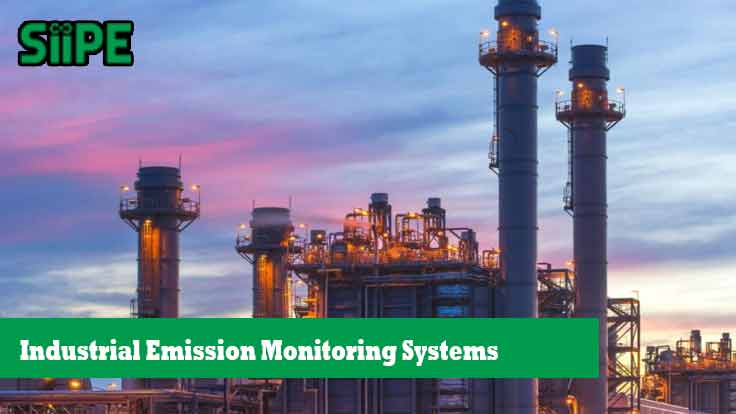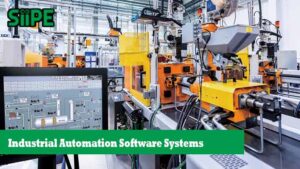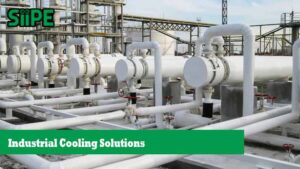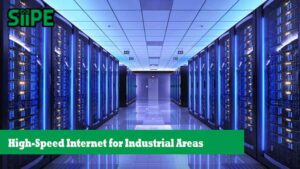Industrial Emission Monitoring Systems play a vital role in ensuring that industrial operations comply with environmental standards. As environmental regulations become stricter, industries are increasingly required to monitor and report the emissions they release into the air, water, and soil. These systems help reduce environmental impact, improve public health, and promote sustainable development.
In this article, we’ll explore what Industrial Emission Monitoring Systems are, how they work, the types available, their benefits, challenges, and future trends in the industry.
What Are Industrial Emission Monitoring Systems?
Industrial Emission Monitoring Systems (IEMS) are tools and technologies used to detect, measure, and report pollutants released by industrial activities. These systems collect real-time or periodic data on various emissions such as carbon monoxide (CO), sulfur dioxide (SO₂), nitrogen oxides (NOx), particulate matter (PM), volatile organic compounds (VOCs), and greenhouse gases (GHGs).
The data gathered can be used for regulatory reporting, internal analysis, or process optimization. These systems are crucial in industries such as manufacturing, petrochemicals, mining, cement, and power generation.
Why Are Industrial Emission Monitoring Systems Important?
1. Regulatory Compliance
Governments worldwide are enforcing stricter emission limits. IEMS helps industries stay compliant by providing accurate data for reporting and auditing.
2. Environmental Protection
By continuously monitoring emissions, companies can quickly detect excessive pollution and take corrective action to minimize environmental harm.
3. Operational Efficiency
Some systems provide insights that help improve fuel usage and optimize combustion processes, resulting in cost savings and better efficiency.
4. Public Health
Reducing industrial emissions helps lower the risk of respiratory diseases, cancer, and other health issues among nearby communities.
How Do Industrial Emission Monitoring Systems Work?
An Industrial Emission Monitoring System typically includes:
-
Sensors and analyzers: These measure concentrations of specific pollutants.
-
Sampling systems: These extract and condition air or gas samples before analysis.
-
Data acquisition systems (DAS): These collect, log, and transmit data.
-
Software platforms: These help analyze data, generate reports, and trigger alerts.
There are two main approaches to monitoring:
A. Continuous Emission Monitoring Systems (CEMS)
CEMS continuously measure pollutants and are often required by law for facilities with large emissions. They provide real-time data and are commonly used in power plants and large industrial operations.
B. Periodic or Manual Monitoring
This involves collecting emission samples at regular intervals and analyzing them in a laboratory. While less expensive, it provides less detailed information than CEMS.
Types of Pollutants Monitored
Industrial Emission Monitoring Systems can detect a wide range of pollutants, including:
-
Particulate Matter (PM2.5 & PM10)
Tiny particles that can enter the lungs and bloodstream, causing health issues. -
Nitrogen Oxides (NOx)
Contribute to smog and acid rain and can cause respiratory problems. -
Sulfur Dioxide (SO₂)
A harmful gas produced mainly by burning fossil fuels. -
Carbon Monoxide (CO)
A toxic gas resulting from incomplete combustion. -
Carbon Dioxide (CO₂) and Methane (CH₄)
Key greenhouse gases responsible for climate change. -
Volatile Organic Compounds (VOCs)
Organic chemicals that can cause health problems and contribute to ozone formation.
Key Features of Modern Emission Monitoring Systems
-
Real-time data transmission
-
Remote monitoring and alerts
-
Data visualization dashboards
-
Compliance reporting automation
-
Integration with industrial control systems
These features make it easier for industries to manage compliance and reduce environmental impact.
Challenges in Implementing Emission Monitoring Systems
While Industrial Emission Monitoring Systems offer many benefits, they also present challenges:
1. High Initial Investment
Installing a full-featured system, especially CEMS, can be costly. This includes hardware, software, and setup.
2. Maintenance and Calibration
Systems must be maintained and calibrated regularly to ensure accuracy. This requires skilled personnel and budget allocation.
3. Data Management
Handling large volumes of data can be overwhelming without the right infrastructure. Companies need to invest in secure and efficient data systems.
4. Changing Regulations
Keeping up with evolving environmental standards across regions and countries adds complexity to compliance.
Best Practices for Emission Monitoring
To maximize the effectiveness of Industrial Emission Monitoring Systems, industries should follow these best practices:
-
Choose the right system based on industry type, pollutant type, and regulatory requirements.
-
Ensure proper installation by certified professionals.
-
Conduct regular maintenance to maintain system accuracy.
-
Train staff to understand system functionality and data interpretation.
-
Use data to identify trends, optimize operations, and predict potential failures.
The Future of Emission Monitoring
The future of Industrial Emission Monitoring Systems is promising, with several innovations on the horizon:
1. IoT and Cloud Integration
More systems are becoming cloud-connected, allowing remote monitoring and easier data access from anywhere.
2. AI and Machine Learning
Artificial intelligence is being used to predict emissions trends, detect anomalies, and recommend actions automatically.
3. Blockchain for Compliance
Blockchain technology is being tested to create tamper-proof records of emission data for audit and transparency purposes.
4. Mobile and Portable Systems
For smaller industries or on-site spot-checking, compact, portable systems are becoming more advanced and accessible.
Conclusion
Industrial Emission Monitoring Systems are a vital component of responsible industrial operation. They not only help meet regulatory requirements but also protect the environment and human health. As technology advances, these systems will become more accurate, cost-effective, and easy to integrate into everyday operations.
Industries that invest in reliable emission monitoring not only comply with the law but also build trust with stakeholders and contribute to a more sustainable future.
Q&A Section
Q1: What is the main purpose of Industrial Emission Monitoring Systems?
A: To measure and report industrial pollutants to ensure environmental compliance and reduce harmful emissions.
Q2: What’s the difference between CEMS and manual monitoring?
A: CEMS provides continuous, real-time data, while manual monitoring involves periodic sample collection and lab analysis.
Q3: Are Industrial Emission Monitoring Systems mandatory?
A: In many countries, yes—especially for large industries with significant emissions. Regulations vary by region.
Q4: Can small industries benefit from emission monitoring?
A: Absolutely. Even basic monitoring helps identify inefficiencies, reduce environmental impact, and avoid legal issues.











